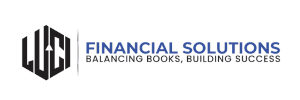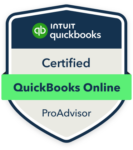Did you know that 60% of small businesses fail because of Cash Flow Management problems? Imagine if your business ran out of money to pay rent or salaries. That’s why managing cash flow is so important.
Have you ever wondered how some businesses always seem to have enough money while others struggle? This blog will cover simple and easy strategies to help you manage your business’s cash flow. From getting customers to pay faster to cutting down on extra spending, these tips will help keep your business healthy and growing.
With LUCI Financial Solutions, Let’s explore more details and learn how to ensure your business always has the money it needs!
Understanding Cash Flow System:

Cash Flow Management is like water flowing in and out of a bathtub. When you turn on the faucet (income), water flows into the tub. When you unplug the drain (expenses), water flows out. In business, cash flow means the money that comes in from sales and goes out to pay bills. It’s the money moving in and out of your business.
Why Having Positive Cash Flow is Crucial for Your Business?
Positive cash flow is like ensuring your bathtub has enough water to take a bath. If more water goes out than comes in, you’ll end up with an empty tub. Similarly, if your business spends more money than it makes, you’ll run out of cash.
Moreover, Positive Cash Flow Management ensures you have enough money to pay your bills, buy new stock, and save for emergencies. It keeps your business healthy and helps it grow. With positive cash flow, a profitable business can stay afloat.
So, think of cash flow as the heartbeat of your business. It keeps everything running smoothly and allows you to plan for the future.
Strategy 1: Predict Your Cash Flow
Imagine knowing how much money you’ll have next month—pretty cool, right? That’s what cash flow forecasting does for your business. It helps you plan and prepare for the future, ensuring you never run out of cash.
At LUCI Financial Solutions, we got the experts for the right job. From managing finances to crafting effective business strategies, our platform is what you need in your professional life.
Why Forecasting is Important?
Forecasting your Cash Flow Management system is like having a weather forecast for your business finances. It helps you see when you have extra cash and run short. By predicting your cash flow, you can make better decisions, like when to save and invest in new opportunities.
Simple Steps to Create a Cash Flow Forecast:
- List Income Sources: Write down all the ways your business makes money.
- Estimate Incoming Cash: Predict how much money you expect to come in each month.
- List Expenses: Write down all your monthly expenses, like rent, utilities, and salaries.
- Estimate Outgoing Cash: Predict how much money you’ll need to spend each month.
- Compare Income & Expenses: Subtract your expenses from your income to see if you’ll have extra cash or run short.
Strategy 2: Get Paid Faster
Imagine doing a chore and getting paid right away—awesome, right? That’s how it should be with your business. Getting paid quickly is essential for keeping your cash flow healthy.
The Importance of Quick Invoicing:
Sending invoices promptly is like sending a bill for that chore as soon as you finish. The faster you send it, the faster you get paid. Quick invoicing ensures you have the money you need to keep your business running smoothly.
Tips for Sending Invoices Promptly & Efficiently:
- Send Invoices Immediately: Don’t wait—send the invoice as soon as the job is done.
- Use Invoicing Software: Tools like QuickBooks or FreshBooks can automate and speed up the process.
- Set Clear Payment Terms: To avoid confusion, specify when payment is due (e.g., within 14 days).
- Follow-up: Send friendly reminders if the payment is late.
- Offer Multiple Payment Options: Accepting different payment methods makes it easy for clients to pay.
Strategy 3: Keep an Eye on Money Owed to You

Consider receivables as your business’s allowance—you want to ensure you get it on time. Keeping track of the money owed to you ensures you have enough cash to keep your business running smoothly.
Tracking Receivables to Ensure Timely Payments:
Knowing who owes you money and when it’s due is essential. Keeping a close eye on receivables helps you spot any late payments and take action to get paid faster.
Techniques to Remind Clients to Pay on Time:
- Send Regular Statements: Remind clients of their outstanding balances by sending monthly statements.
- Automate Reminders: Use invoicing software to send automatic payment reminders before and after the due date.
- Offer Early Payment Discounts: Encourage clients to pay early by offering a small discount for prompt payment.
- Follow Up with Phone Calls: A friendly phone call can sometimes prompt clients to pay their overdue bills.
- Establish Clear Payment Policies: Communicate your payment terms and consequences for late payments upfront.
Strategy 4: Cut Down on Extra Spending
Imagine your business is a boat; every unnecessary cost is like a hole letting water in. You need to plug those holes and reduce extra spending to stay afloat. At LUCI Financial Solutions, we help you stabilize your finance boat and ensure it reaches its goals on time with accuracy & efficiency.
Identifying and Reducing Unnecessary Costs
Start by reviewing all your expenses. Look for anything that isn’t essential for your business operations. This could be subscriptions you don’t use, supplies you don’t need, or services you can do without. Cutting these unnecessary costs can save you a lot of money.
Easy Ways to Save Money in Your Business:
- Switch to Digital: Reduce paper and printing costs by going digital.
- Negotiate with Suppliers: Ask for discounts or better terms from your suppliers.
- Use Energy-Efficient Solutions: Save on utility bills by using energy-efficient lights and equipment.
- Outsource Tasks: Consider outsourcing non-core tasks like payroll or marketing to save on hiring full-time staff.
- Buy in Bulk: Purchase supplies in bulk to get better prices.
Strategy 5: Manage Your Inventory Wisely
Managing your inventory is like keeping your pantry stocked—you don’t want too much or too little. Keeping track of your inventory without overstocking helps your business run smoothly and saves money.
How to Keep Track of Inventory Without Overstocking
First, regularly check what you have in stock and compare it to what you need. Inventory Cash Flow Management software tracks items automatically, and sets reorder points. This way, you’ll know when to restock and avoid having too much inventory.
Benefits of Good Inventory Management:
- Saves Money: Reduces storage costs and prevents money from being tied up in unsold stock.
- Improves Cash Flow Management: Frees up cash for other business needs.
- Boosts Efficiency: Helps you quickly find what you need and fulfill orders faster.
- Increases Customer Satisfaction: Ensures you always have the right products available when customers need them.
Strategy 6: Negotiate Better Payment Terms
Negotiating better payment terms with your suppliers and clients can significantly improve your Cash Flow Management. It’s like getting extra time to pay your bills or getting paid faster by your clients, which helps you manage your money better.
Why Negotiating Payment Terms Helps Cash Flow
Negotiating longer payment terms with suppliers gives you more time to pay your bills without hurting your Cash Flow Management. On the other hand, negotiating shorter payment terms with clients means you get paid faster, improving your cash inflow. Both strategies help ensure you have enough money to cover your daily expenses.
Tips for Getting Better Deals with Suppliers and Clients:
- Build Good Relationships: Maintain positive relationships with your suppliers and clients to make negotiations easier.
- Ask for Discounts: Request early payment discounts from suppliers or offer discounts to clients who pay early.
- Be Clear and Fair: Communicate your needs and be fair in your negotiations to reach mutually beneficial agreements.
- Review Contracts: Regularly review your payment terms and contracts to identify areas for improvement.
Strategy 7: Plan for Tax Payments

Planning for taxes is like ensuring you have enough money saved for a significant expense—you don’t want surprises.
Why Tax Planning is Essential?
Tax planning helps you know how much you owe and avoid penalties. It ensures you have enough money to pay your taxes on time, keeping your business running smoothly and avoiding financial stress.
How to Prepare & Save for Taxes?
- Keep Accurate Records: Track all your income and expenses throughout the year to know exactly how much you owe.
- Estimate Quarterly Payments: If you have to pay quarterly taxes, estimate how much you need to pay each quarter and set that aside.
- Set Up a Tax Savings Account: Open a separate bank account just for tax savings, and regularly deposit a portion of your earnings.
- Consult a Tax Professional: Get advice from a tax expert to ensure you take advantage of all deductions and credits.
Strategy 8: Check Your Cash Flow Regularly
Monitoring your cash flow management system regularly is like checking your bank account balance—it helps you know how much money you have and where it’s going.
The Importance of Monitoring Cash Flow Frequently
Keeping a close eye on your cash flow helps you spot problems early and take action before they become significant. It ensures you have enough money to cover your expenses and helps you make informed financial decisions.
Tools to Help You Track Your Cash Flow Easily:
- Spreadsheet Software: Use Excel or Google Sheets to create simple cash flow statements.
- Accounting Software: Tools like QuickBooks, Xero, and Wave can automate cash flow tracking and provide real-time updates.
- Cash Flow Apps: Apps like Float or Pulse offer easy-to-use platforms for monitoring cash flow.
Strategy 9: Use Tech to Manage Cash Flow
Using technology to manage cash flow is like having a smart assistant who effortlessly helps you keep track of your money.
Benefits of Using Technology:
Technology makes it easier to monitor your cash flow by automating tasks, reducing errors, and providing real-time insights. It saves you time and helps you make better financial decisions.
Best Tools & Software for Cash Flow Management:
- QuickBooks: A comprehensive tool for invoicing, expense tracking, and real-time cash flow updates.
- Xero: Offers seamless integration with bank accounts and provides detailed cash flow reports.
- Wave: Free accounting software that helps small businesses efficiently manage cash flow.
- Float: A cash flow forecasting tool integrating accounting software to predict future cash flow.
- Pulse: A simple app for monitoring cash flow and generating easy-to-understand reports.
Strategy 10: Build a Cash Cushion

Having a cash reserve, or cash cushion, is like having a safety net for your business. It helps you handle unexpected expenses and keeps your business running smoothly during tough times.
Why Having a Cash Reserve is Important
A cash reserve ensures you have enough money to cover emergencies, slow periods, or unexpected costs without borrowing or cutting essential expenses. It provides financial security and peace of mind.
Tips for Saving and Building a Cash Reserve:
- Set Savings Goals: Decide how much you want to save and set achievable goals.
- Save Regularly: Saving a portion of your monthly profits is a habit.
- Cut Unnecessary Expenses: Identify and reduce extra costs to free up more money for savings.
- Open a Separate Account: Keep your cash reserve in a separate bank account to avoid spending it accidentally.
- Review and Adjust: Regularly review your savings and adjust your goals as needed.
Conclusion:
Cash Flow Management is crucial for your business’s success. You can keep your finances healthy by predicting your cash flow, getting paid faster, keeping an eye on money owed, cutting extra spending, managing inventory, negotiating payment terms, planning for taxes, checking cash flow regularly, using technology, and building a cash cushion.
Apply these strategies to ensure your business thrives. For expert help, contact LUCI Financial Solutions.










